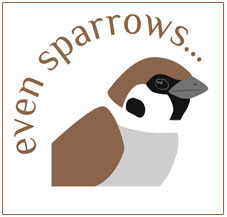

THE SEABIRD'S CRY
Posted: 15.07.22 in Articles category
This month’s title takes its name from a book I discussed in July 2020 when my monthly article focused on seabirds and the joys of watching them. I had thought I would write something now on similar lines and planned to pen a piece about the pleasure of seeing an amazing seabird earlier this year. However, tragic developments taking place along the Northumberland coastline have compelled me to change tack and write instead about the disaster affecting seabird colonies both locally and further north in Scotland. A virulent form of avian flu has struck with devastating consequences, killing off large numbers of auks, gannets, gulls and terns. We don’t yet know the final death toll, but it is likely to number tens, if not hundreds, of thousands of birds. It is pitiful to see. Dying birds flap and topple over, as if struck by a form of seizure. Corpses lie strewn along our beaches. It seems nothing can be done for affected birds which are doomed to die very quickly and in distress. As to the cause? I don’t think we fully know at the time of writing, but it is a reminder just in case we needed one how deadly a pandemic can be. It’s been described as ‘COVID for birds’, but with this virus the mortality rate for infected bird populations ranges between 50 and 100%!
I had wanted originally to write about watching a truly magnificent seabird on the Yorkshire coast. On 8 May we were returning from visiting our daughter in Leeds and made a diversion to Bempton Cliffs near Bridlington to see the long staying Black-browed Albatross. And we were in luck. As we arrived at the site, we met various people heading back to the reserve car park, complaining that the bird hadn’t been seen for four hours or more, yet within 5 minutes I spotted it in flight not far below us among a melee of Gannets. What a bird! It has narrow jet-black wings that contrast starkly with its white head and body. That head has a very short and dark eye stripe, giving the appearance of a black eyebrow, hence the bird’s name. Yet its most impressive feature is its size - an 8 feet wingspan, matching the total wing length of a Mute Swan. As I have said, a magnificent bird and wonderful to see, especially when it circled close by us among the Kittiwakes which it dwarfed.
Being at a seabird colony like Bempton Cliffs is as much an audio as well as visual experience. It is a noisy cacophony of sounds with a multitude of birds calling to breeding partners, parents, chicks and rival birds. It can be deafening, but sadly much less so this season in the colonies where the flu virus has ripped through. The seabird’s cry is muted and it’s a lament.